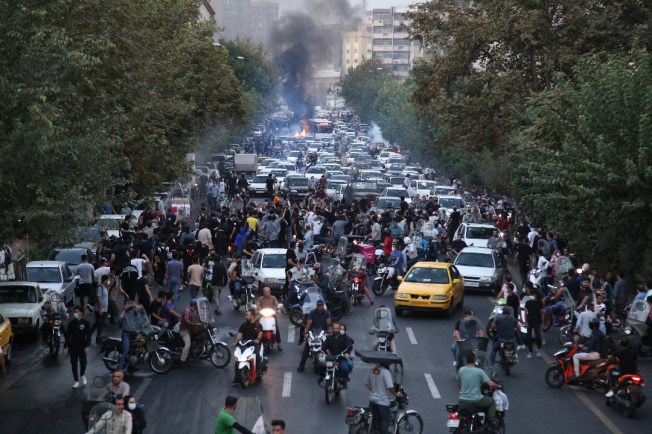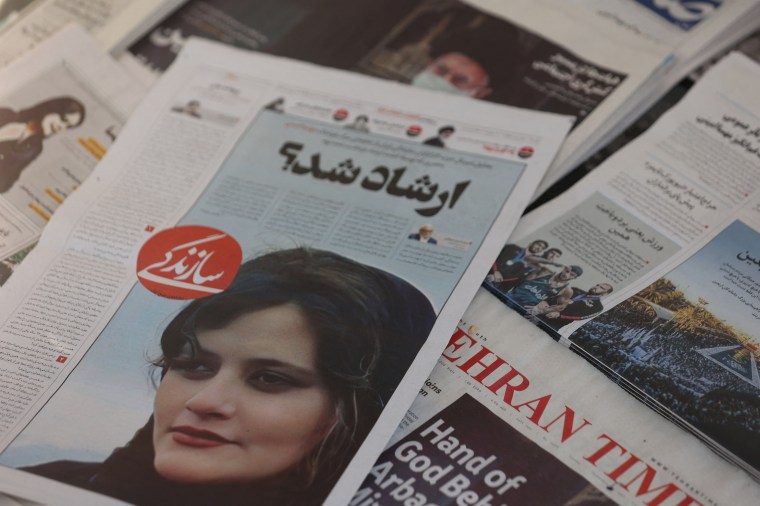When mass protests erupted in Iran more than a week ago, the government cracked down hard. While clashes between security forces and demonstrators left many dead and disruptions to internet service made information hard to obtain, CPJ learned that security forces had arrested at least 28 journalists as of September 29. (Click here for CPJ’s updated list of names of the detained.)
CPJ senior researcher Yeganeh Rezaian, who was detained in 2014 for 72 days — 69 of them in solitary confinement — while an accredited journalist in Iran, discusses the implications of the latest developments.
What do we know about the protests and the journalists reporting on them?
The protests have been happening daily for two weeks. They’re happening in dozens of cities large and small, including the two main religious centers, Mashhad and Qom.
As we’ve seen regularly in recent years, Iranians are dissatisfied with the ruling Islamic Republic and have risen up against its abuses of power. In this case, it was the death of a 22-year-old woman named Mahsa Amini while in morality police custody for allegedly not wearing her hijab properly, according to officials. That incident set off the most significant protests in the system’s 43-year history–that must be said is women-led–and they show no signs of slowing.
Since the unrest began, CPJ has learned of new journalist arrests every day. By September 29, we had confirmed that at least 28 journalists had been arrested, many violently, usually after midnight. And the Norway-based NGO Iran Human Rights estimates that at least 76 protesters have been killed thus far, but many observers believe the number could be much higher.
One source who spoke to us from HaftHoz Square in the eastern part of Tehran said the arrests and crackdowns are brutal, with people being arrested simply for being in the street, regardless of what they are wearing. “You could easily feel the heavy presence of anti-riot police throughout the city,” the source said. “Also, protests have shifted from daylight, when the morality police usually patrol, to nighttime hours so protesters can better obscure their identities.”
Others have told us that the nature of the protests are changing, with many protesters coming out in their cars instead of on foot to reduce their chances of arrest.
How does the arrests of journalists affect coverage of the protests?
Security forces create an environment of fear in neighborhoods when they raid journalists’ homes, scaring families and neighbors away to make sure no one reports the arrests or talks to the media, especially the Persian-language media in exile. And then journalists are usually taken to solitary confinement in the notorious Evin prison or, in some cases, held in very crowded and unsanitary cells, or with low-quality food in the all-women Qarchak prison.
Additionally, the government does not want reporting about these protests to reach the outside world, so they have greatly restricted internet access and at times have shut it off entirely. That has made it difficult both to share images about protests taking part in different parts of the country and also for ordinary citizens to communicate with the world beyond its borders.
It’s worth noting that in an interview broadcast on Iran’s state television network, President Ebrahim Raisi blamed the protests on the United States, saying it wanted “to create chaos and jeopardize security in this country.” The Islamic Republic has often used such accusations of foreign collaboration as a justification for the mass arrest and harsh treatment of protesters. Some lawmakers are already calling for demonstrators to be executed.

The U.S. has adjusted its sanctions on Iran so tech companies can give Iranians access to more services and platforms. Do you expect that to help in getting more information about what’s happening?
The effects of the U.S. move will likely not be felt immediately. Observers note that while the internet has not been shut down completely in some parts of the country, download speeds have been reduced to a trickle.
Many of the Iranian journalists arrested are women, and veteran journalist Christiane Amanpour, a senior adviser to CPJ’s board of directors, made headlines last week by refusing to wear a headscarf to an interview with Iranian President Ebrahim Raisi. What difficulties are women journalists facing as they try to cover this moment in Iran?
Women journalists have always faced challenges in Iran. I know this all too well, having been imprisoned and held in solitary confinement for 72 days while I was an accredited journalist in Iran. By law we are degraded, so gender-based attacks on women generally go unpunished and in some cases are even encouraged by authorities.
Iranian Twitter is a particularly nasty place for women journalists, as we’ve documented before. It’s a very stifling environment to work in, but female journalists, like other women in society, have been undeterred by the threats of reprisal from authorities. It’s one of the reasons that this moment feels different.
Editor’s note: The second paragraph of this report has been updated to include the year of Rezaian’s detention and clarify the time she spent in solitary confinement.
